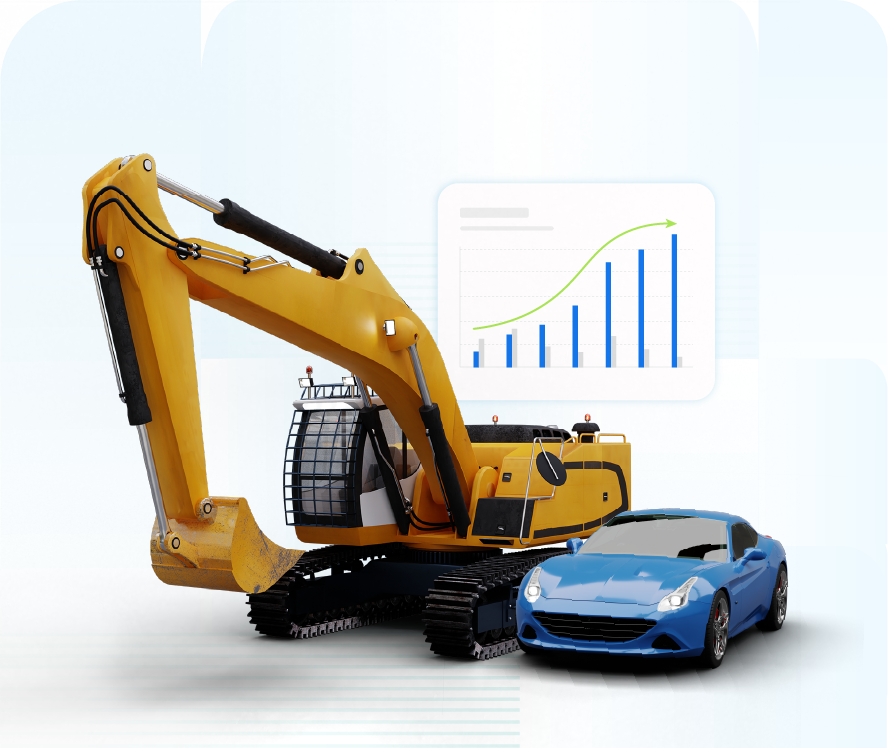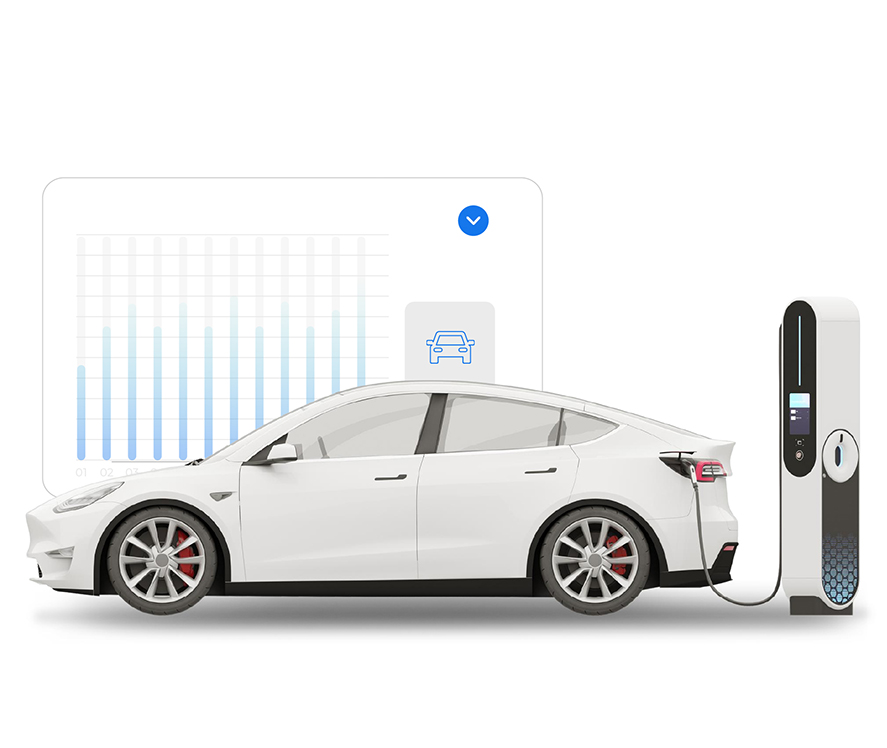How U.S. EV policy shifts will shape the automotive industry - Key implications for 2025
Explore how Trump’s EV policy reversal impacts automakers, tariffs, consumer incentives, and what strategies OEMs need to stay competitive globally.

On January 20, 2025, President Donald Trump announced plans to reverse key EV policies introduced during the Biden administration. His administration intends to remove production mandates, scale back federal tax credits, and shift towards a free-market approach for auto manufacturers.
The announcement has stirred significant debate and uncertainty, particularly due to the ongoing turmoil caused by tariffs on automotive components and materials, which have led to rising production costs for automakers. These tariffs are further complicating the landscape for manufacturers already grappling with supply chain challenges, especially in critical raw materials like lithium, nickel, and cobalt, all essential for EV battery production.
In this context, EV policies are crucial not only because they shape the direction of technological advancements in the automotive industry but also because they influence the broader economic environment, including consumer affordability, innovation, and global competitiveness. As automakers seek to navigate changing regulations, these policies will directly impact the pace and scope of electric vehicle adoption.
Early incentives and growth
Over the past decade, the United States has been pivotal in advancing cleaner automotive technologies. Federal tax credits, stricter emissions standards, and research and development (R&D) funding helped position electric vehicles as viable alternatives to conventional internal combustion engine (ICE) cars and ushered in AI-driven innovation in auto finance that made electric mobility commercially viable. This momentum also encouraged traditional automakers to invest heavily in EV design and battery technology.
The Biden mandate
During President Joe Biden’s term (2021–2025), a series of orders, sometimes referred to as the “Biden rule” or simply the “EV mandate,” were introduced to accelerate the nation’s transition toward electric mobility.
In 2021, the Biden administration introduced a comprehensive plan calling for half of all newly sold vehicles in the United States to be electric, plug-in hybrid, or hydrogen-powered by 2030. This initiative also imposed tougher fuel efficiency requirements on automakers, offered tax credits for EV purchasers, allocated grants to expand the nation’s charging infrastructure, and prioritized domestic production of electric vehicle components.
Trump’s recent statement on EV policies
Upon his inauguration in January 2025, President Trump detailed plans to reverse or significantly change the Biden-era guidelines. He pledged to “revoke the electric vehicle mandate,” effectively reducing or eliminating requirements that automakers meet specific EV production quotas. The move could also scale back mandates requiring energy retailers to install charging stations rapidly.
Additionally, the Trump administration is considering more flexible emissions and reductions or the removal of federal EV tax credits. These moves suggest a philosophy that market demand should drive automotive innovation rather than government mandates.
Impact of tariffs on raw materials and components
In addition to policy changes, tariffs on automotive components, particularly batteries, raw materials, and imported vehicles, have already been affecting production costs for automakers. Since January 2025, new tariffs on Chinese-made EV batteries and critical raw materials like lithium, cobalt, and nickel are expected to increase manufacturing costs, especially for automakers heavily reliant on imported components.
For example, tariffs on lithium, a critical material used in EV batteries, could cause a significant rise in production costs for companies like Tesla, Ford, and GM, which rely on global supply chains. This increase in material costs could, in turn, affect vehicle pricing, potentially making EVs less financially attractive to consumers, particularly if federal tax credits shrink as anticipated.
Auto industry landscape
The shift in EV policies is massively affecting the automotive industry landscape, with various players adjusting their strategies to navigate new challenges. While the broader auto industry includes numerous original equipment manufacturers (OEMs), we’ve highlighted a few key examples that exemplify how these policy changes impact major brands at the forefront of electrification efforts.
Tesla
Tesla stands at the forefront of electric vehicle technology, with a substantial global market share. A partial rollback of EV mandates may affect Tesla’s outlook in the U.S. market, especially if consumer incentives shrink. However, Tesla holds a substantial advantage over other OEMs due to its strong cost position, its mastery of customer engagement in vehicle finance, and healthy profit margins. This enables Tesla to absorb cuts to subsidies more effectively than most competitors.
Additionally, the newly imposed tariffs and the uncertainty around them could impact Tesla’s supply chain costs and pricing, particularly if import duties on components or foreign-made vehicles increase. Further, Tesla’s formerly strong brand loyalty, along with its stock, has been plummeting with its CEO’s engagement in the Trump administration. The fact that Tesla’s established charging network may continue to attract dedicated EV buyers, but its stock is currently more influenced by Elon Musk’s political involvement than EV policies.
General Motors (GM)
GM pledged to transition a large portion of its line-up to electric by the mid-2020s. However, trade uncertainties and potential new tariffs could affect raw material costs, impacting production targets and investment strategies. Regulatory changes could affect the company’s production targets and investment strategies, particularly if federal credits for EV buyers diminish.
Ford
Ford’s aggressive push into EVs (including popular models like the Mustang Mach-E and F-150 Lightning) hinges on consumer demand and ongoing R&D. New tariffs could increase production costs, particularly for batteries and imported components, potentially requiring price adjustments or strategic shifts. Any rollback in federal support could prompt strategic recalibrations, though the company has ongoing commitments to electrification aimed at global markets.
Toyota
Known for pioneering hybrid vehicles (e.g., the Prius), Toyota has been exploring battery-electric and hydrogen fuel cell vehicles. Trade restrictions and tariffs could impact Toyota’s supply chain and vehicle pricing, especially as it continues importing components from global markets. Reduced federal mandates may slow its ramp-up in purely electric models, depending on how consumer demand evolves.
New factors to consider
Global climate commitments
Despite any U.S. policy shift, Europe remains committed to strict emissions targets, pushing automakers to invest in EVs for global competitiveness. China, though a Paris Agreement signatory, prioritizes market dominance over emissions goals, adapting production based on demand. Automakers that want to remain competitive worldwide will continue investing in EVs to meet these international standards. Moreover, many countries are on track to phase out ICE cars by the 2030s. This tension could create a “split market” if the U.S. lags behind global clean-transport trends.
Supply chain vulnerabilities
The U.S. relies on global sources of critical materials like lithium, cobalt, and nickel for EV batteries. With reduced federal incentives and an uncertain policy direction, investments in domestic supply chains may stall, increasing reliance on imports. While a free-market approach could, in theory, encourage private-sector investment, the lack of clear government backing creates too much uncertainty for large-scale domestic mining and processing projects. As a result, automakers and battery manufacturers may continue sourcing materials from established global suppliers, potentially weakening U.S. competitiveness in EV production. This initial uncertainty has, however, almost entirely been superseded by a global investment sclerosis caused by the Trump administration’s tariffs.
Potential effects on the auto industry
1. Production targets & strategy
Automakers heavily invested in EV manufacturing under the Biden rule may face revised targets not just because of Trump administration eases requirements but also weaker-than-expected consumer demand, possibly shifting strategy back toward traditional ICE vehicles or balancing global demands with domestic policies.
2. Supply chain implications
Battery manufacturers, charging infrastructure providers, and tech suppliers may experience volatility in procurement orders, further complicated by the tariff actions currently being introduced by the Trump administration. These tariffs could disrupt the flow of critical materials and components, escalating costs, and leading to uncertainties in supply chains. Adaptability will be key, especially given the ongoing growth of EVs in global markets outside the U.S.
3. Global competitiveness
Even if U.S. regulations become more lenient, international environmental standards (particularly in Europe and Asia) remain stringent. American automakers, such as Ford, continue to maintain a strong presence in key markets like North America and Europe. However, Chinese OEMs largely operate through joint ventures (JVs), which may impact their independence and competitiveness in these markets. Despite domestic rollbacks, U.S. manufacturers must maintain compliance with international standards, potentially keeping EV production robust as they navigate both global regulations and shifting domestic policies.
Impact on consumers
1. Affordability & incentives
Reductions in federal tax credits or grants might make EVs less financially attractive to mainstream buyers. This could slow adoption, especially if upfront costs remain higher than comparable ICE vehicles.
2. Charging infrastructure
Investment in public charging infrastructure has slowed, largely due to market-driven factors rather than federal policy alone. The U.S. Battery Electric Vehicle (BEV) market share reached 8% in 2024, but this growth has not been enough to sustain the rapid expansion of charging networks seen in previous years.
Additionally, the Trump administration has proposed removing charging stations from federal buildings as part of a broader rollback of Biden-era EV policies.
3. Choice & innovation
Despite shifting federal policies, automakers have made substantial progress in EV technology, resulting in better battery ranges, more model options, and improved charging times. As OEMs expand their line-ups into lower segments, consumers can expect a broader range of affordable EV options. The industry is also working towards achieving parity between ICE and EVs in terms of average MSRPs for like-for-like models, making EVs more accessible. While overall growth may be more demand-driven than mandate-driven, consumers seeking EVs will still have multiple choices at various price points.
Looking ahead
While President Trump’s recent directive aims to dismantle the Biden-era EV mandate, the broader trend toward electrification remains influential, largely due to global market forces and consumer interest in cleaner and quieter vehicles. In this environment of changing policies, many states and private companies will continue their own strategies, maintaining incentives and infrastructure investments at the local level.
For leaders and decision-makers, the best approach involves staying informed, agile, and proactive. Automakers, suppliers, and energy stakeholders can manage risk by diversifying product lines, optimizing supply chains, and collaborating with policymakers at the federal and state levels.
How NETSOL can help
As the automotive landscape shifts and consumer expectations evolve, the residual value risk, especially in the secondary EV market, poses a significant challenge for OEMs, dealerships, and financial institutions. NETSOL Technologies provides solutions that help mitigate this risk by enabling advanced asset management and trade-cycle optimization. Our platforms offer real-time insights into market demand and vehicle value trends, empowering you to make informed decisions, adapt to market fluctuations, and maintain a competitive advantage in a rapidly changing environment.
What OEMs should do: Strategic recommendations
Maintain a dual-track strategy
Continue investing in EV innovation to meet global requirements but keep your ICE line-up strong for the U.S. market if incentives fade. This balanced approach can safeguard market share at home and abroad.
Strengthen digital ecosystems
In today’s shifting policy environment, it’s crucial for OEMs to not just deploy digital retail platforms but also move towards a mobility orchestration model. This model integrates vehicles, financing, and infrastructure for seamless operations. By leveraging real-time credit and asset risk monitoring through Business Intelligence (BI) models, they can optimize asset values, adjust pricing, and offer tailored financing options based on up-to-date market and customer data. This approach ensures efficiency, flexibility, and a better customer experience in a shifting policy landscape.
Optimize financing solutions
Use advanced financing tools to adapt quickly to changing tax credits or regulatory changes. Flexible and data-driven models ensure better margins and higher customer satisfaction, even if federal incentives disappear.
Invest in supply chain resilience
As the U.S. debates the role of government in EV development, OEMs and suppliers should proactively secure their supply chains, particularly for batteries and critical minerals, to remain competitive globally.
Collaborate with states & private sector
Many states will continue to push for electrification. OEMs can partner with state governments, utilities, and private firms to build localized charging infrastructure, ensuring a reliable EV experience for consumers.
Conclusion
The EV landscape is undergoing a pivotal shift as the U.S. federal government redefines its role in shaping the automotive future. Navigating these evolving policies can be complex, but it also presents opportunities for organizations and investors to reassess their strategies and gain a competitive edge.
For OEMs, dealerships, and financial institutions, adaptability is crucial. Modern digital retail solutions and flexible financing platforms can help offset policy uncertainties while meeting evolving consumer expectations.
To meet evolving consumer expectations and support diverse financing needs, OEMs can leverage the Transcend platform, NETSOL’s next-generation suite built for the future of automotive commerce. With Transcend Finance and Transcend Retail, Transcend enables a seamless, omnichannel purchase experience while supporting flexible lease and loan structures that can adjust to shifting incentives or tax policies. Optimizing the asset management in your portfolio means having real-time data on contracts, your asset values, and next best action decision parameters in your hands. Understanding how to maximize revenue generation through a cycle of leases, used-car leases, subscriptions, and rentals is called for in this age of mobility orchestration. By investing in scalable digital tools and enterprise-grade finance technology, OEMs and their finance partners can stay competitive in a market shaped by consumer demands and sustainability-driven transformation.
Related blogs

The importance of knowledge continuity in asset finance: Lessons from the field

The future of EV sales in the United States




